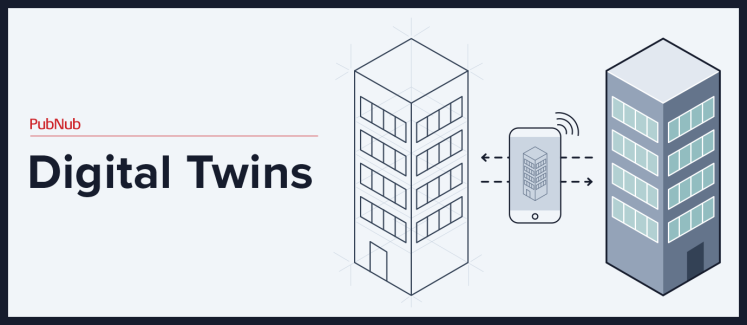
A Digital Twin refers to the digital representation of a tangible real-world entity, such as vehicles, factory machinery, wind turbines, buildings, and even entire cities. In essence, they are virtual replicas of physical systems brought to life through data and algorithms, leveraging the Internet of Things (IoT) to mirror the lifecycle of physical assets in real-time. Experts predict, underlining the increasing use of digital twins, that in the not-so-distant future, every newborn might receive their own digital model, a predictive tool facilitating treatment options and assisting decision-making in medical diagnoses, effectively creating a healthcare revolution.
The Digital Twin concept functions by collecting data from the real-world counterpart through sensors or other data sources, which are then mapped onto the virtual model. This digital transformation enables the visualization of the product lifecycle, understanding real-world performance, and running simulations under numerous conditions to create predictive analytics for performance. The Digital Twin paradigm consists of three components: the physical object or system along with its environment, the virtual representation of the object or process, and the communication channel that conveys real-time data between the two, thus creating a high-quality mirror of the physical asset.
This concept of digital twins was initially introduced in 2002 by Michael Grieves at a Society of Manufacturing Engineers conference. Still, NASA is often credited with the first practical application in 2010 when they utilized Digital Twin technology for improving physical-model simulation of spacecraft. The understanding and applications of digital twins, be it in aerospace or manufacturing, have evolved over the last two decades, with the constant requirement for real-time data input remaining consistent.
Use of Digital Twins
In 2017, Gartner listed Digital Twins as one of the Top 10 Strategic Technology Trends, predicting that by 2022, numerous physical entities would have their digital twin models. While this prediction hasn't fully materialized, we still see a rise in the use cases of digital twins. For instance, the automotive and civil engineering sectors are leading the way. The Los Angeles Department of Transportation had a Digital Twin of the city’s transportation infrastructure created, the Shanghai Urban Operations and Management Center has developed a Digital Twin of the entire city, and automotive manufacturer Tesla creates a Digital Twin for each of its vehicles to minimize the need for servicing.
Benefits of Digital Twins
While some industries are embracing the uses of Digital Twins more than others, any industry that benefits from real-time data will find it useful.
Healthcare - As mentioned at the beginning of this article, Digital Twins provide healthcare with many preventative and treatment opportunities. If using Digital Twin technology to treat their patients, healthcare providers can predict how a patient’s illness or chronic condition will respond to specific treatment modalities. They will also be able to illustrate to patients, how lifestyle changes could positively affect their overall health and wellness, possibly leading to quicker and easier adoption of healthy lifestyle changes. These capabilities are especially important now that the adoption of telehealth services is more widespread.
Automotive - While car manufacturers like Tesla already incorporate Digital Twins into their manufacturing process, others would benefit from the real-time data that are collected in order to cut costs and improve operational efficiency.
Manufacturing - Manufacturers are always looking for ways to streamline manufacturing processes, and secure and optimize their supply chain. With Digital Twins, they can find areas to make changes without worrying about downtime or interrupting workflows. For example, modeling changes to Fleet Tracking and Dispatching could realize efficiencies that will lead to not only cost savings but also further an organization’s sustainability initiatives.
Civil Engineering - With the Internet of Things (IoT) being a part of our everyday lives, it’s no surprise that entire cities have become Smart Cities and Digital Twins are at the center of that digital transformation. Whether it’s tracking the status of the world’s first 3D-printed steel bridge or building the world’s most cutting-edge sports and entertainment venue, Digital Twins are being utilized to gather real-time data and answer questions for everybody from engineers to event organizers to maintenance departments.
Sustainability - Together with Artificial Intelligence, Digital Twins are being utilized by both cities and organizations to determine how to reduce their environmental impact. Now planners can use these technologies together to understand how to reduce emissions, pollution, and other environmental hazards by analyzing data from various sources and testing different variables in the virtual model.
In summary, Digital Twin technology offers a myriad of optimization and automation benefits multiple fields, transforming traditional workflows into streamlined, data-driven processes. With the aggregation of amounts of data from various sources, these digital twins can offer predictive maintenance, thereby reducing downtime and optimizing the manufacturing process.
PubNub and Digital Twins
A key element of many Digital Twin initiatives is real-time data which could be bi-directional. This is unlike a normal IoT cloud platform type of use case where data from many sensors fan into the central cloud. With Digital Twins, there is a 1-1 mapping between the digital twin and the physical object and it is almost like real-time messaging between the two. Additionally, since physical objects might be interconnected in some way, that means digital twins will mimic that, sending messages to each other as well.
As an expandable, real-time messaging platform, PubNub is uniquely positioned to partner with organizations that are working on Digital Twin offerings, thanks to services like App Context. This feature automatically broadcasts a message when data changes in real time, ensuring the integrity of your data. In fact, App Context was designed with "quick-changing data" in mind.
Are you interested in learning more about how to work with PubNub to power your data-driven product? Our team is here to help answer any questions you may have or you can sign up for a free trial and get started test-driving our platform.
